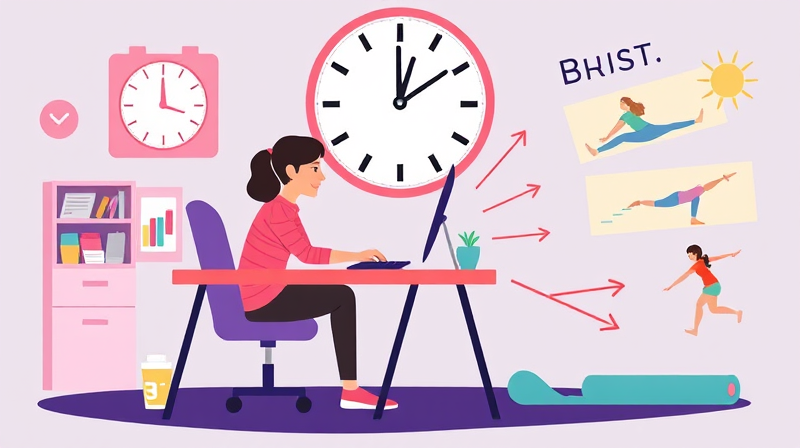Working out is an incredible way to challenge your body and build strength, but true progress comes with how you recover. Post-exercise healing and rest are not just afterthoughts; they are vital components of a successful fitness journey. By embracing the right recovery techniques, you can prevent injuries, enhance your performance, and keep your body inspired to achieve more.
Rest and recovery are the cornerstones of any thriving exercise routine. When you work out, you are essentially creating tiny micro-tears in your muscles. These tears are then rebuilt during the recovery phase, making your muscles stronger than before. With that in mind, integrating safe and effective recovery strategies into your routine is essential.
Prioritize Quality Sleep
Sleep is more than just a period of rest; it is a vital process during which your body repairs itself. Research shows that during deep sleep, your body releases growth hormones that accelerate muscle repair and recovery. Aim for between 7 and 9 hours of uninterrupted sleep every night. Quality sleep is the foundation for a rejuvenated body and mind, ensuring you wake up ready to tackle the next day with vigor.
Establishing a bedtime routine, creating a cool and dark sleep environment, and avoiding electronic devices before sleep can significantly enhance the quality of your rest.
Embrace Active Recovery
Active recovery means engaging in light, low-intensity activities on your rest days. Instead of complete inactivity, try gentle activities such as walking, swimming, or practicing yoga. These movements stimulate blood flow and help in the removal of metabolic waste from your muscles. Movement, even when it is gentle, is the key to reducing muscle stiffness and soreness.
Here are some ideas for your active recovery routine:
- Light walking to maintain circulation
- Yoga sessions that focus on breath and balance
- Easy cycling to keep your muscles moving
Remember, the goal is to move without stressing your body so it can recover more efficiently.
Nourish Your Body
After a hectic workout session, what you feed your body becomes incredibly important. A balanced diet rich in proteins, complex carbohydrates, and healthy fats aids muscle repair and restores energy levels. Nutrition isn’t just about what you eat during your workout; it’s about sustaining a lifestyle that supports ongoing recovery.
Incorporate a post-workout meal that includes 15-25 grams of protein within an hour after exercising. This helps to rebuild your muscles effectively. Complement your meals with hydration strategies, drinking enough water throughout the day. A simple rule to follow is to drink 8 ounces of water for every pound of weight lost during your workout.
Stretching and Mobility Work
Dedicate a portion of your post-exercise time to stretching and mobility exercises. Both static stretches (held for a longer period) and dynamic movements (flowing through a sequence) contribute to improved flexibility and reduced muscle tightness. Stretching not only relaxes the muscles but also sets the stage for your next workout.
Creating a cool-down routine that includes these exercises can help normalize your heart rate and provide relief from the tension accumulated during exercise.
Utilize Self-Care Tools
Integrating tools like foam rollers and compression garments into your recovery routine can make a significant difference. Foam rolling, or self-myofascial release, can help break down muscle knots and enhance circulation. Spend 10-15 minutes focusing on tight areas, and allow your muscles the chance to breathe and recover.
Compression garments, when worn for up to 24 hours after intense exercise, have been found to reduce muscle soreness and speed up recovery. These simple tools can quickly become key components of your approach to healing after workouts.
Consider Cold Therapy and Massage
Cooling down with ice packs or taking a cold shower are effective techniques to reduce inflammation and muscle soreness after strenuous workouts. Practice safe limits by restricting cold exposure to 10-15 minutes. This method helps in controlling inflammation and supports quicker recovery.
Additionally, massages or using massage guns can enhance blood flow and soothe muscle tension. Self-care practices like these are often the secret to long-lasting physical and mental health.
Integrate Mindfulness into Recovery
The state of your mind plays an important role in the recovery process. Techniques such as deep breathing exercises, meditation, and other relaxation methods can help manage stress and promote an overall sense of well-being. A calm mind contributes significantly to physical recovery, making these practices a great complement to your physical routines.
Even a few minutes of mindfulness each day can influence your performance by reducing mental and physical strain, and it cultivates a more positive outlook on your fitness journey.
Listen to Your Body
Lastly, the most important advice is to listen to your body. Pay attention to signs of fatigue and persistent soreness. Your body communicates through these signals, and it is important to take extra rest or consult a professional if the discomfort continues. Trusting your body is central to preventing injuries and ensuring that your fitness journey remains sustainable and enjoyable.
By incorporating these safe techniques for post-exercise healing and rest into your routine, you take a proactive role in maintaining your health and enhancing your performance. With each session of mindful recovery, you set new grounds for personal improvement, preparing your body for future challenges while celebrating the progress you've already made.
This holistic approach encourages you to view recovery as a series of opportunities for self-improvement and reflection. Embrace these techniques with enthusiasm, and you will find that the path to better health and fitness begins with caring for your body after every workout.








